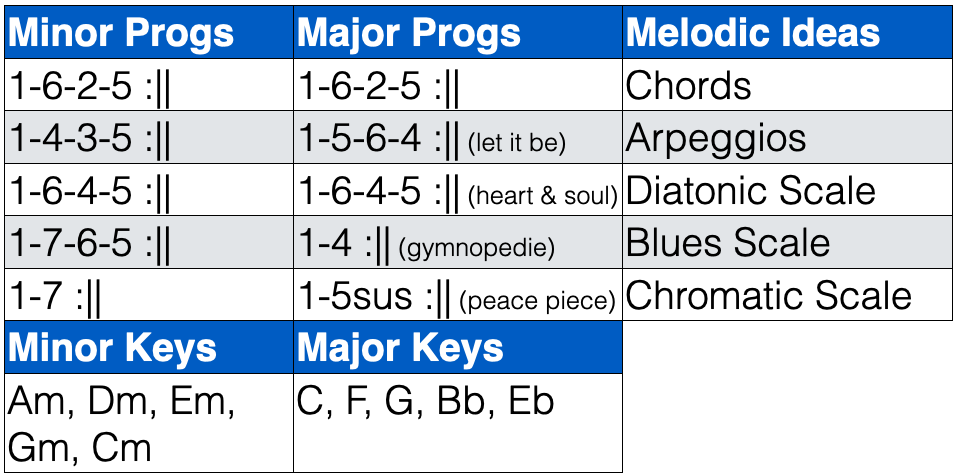Jazz Improvisation
The way we typically approach Jazz Improvisation is through:
- Learning to play the chord progression and melody of a song; and then
- Improvising over that same chord progression
In this way we spontaneously create a new melody over a given chord progression.
But as a pianist, you control both the harmony (generally in your left hand) and the melody (generally in your right hand), so there is no real reason for you to stick to a given chord progression. This is only helpful if you’re playing in a band (so that everyone knows what they should be playing). As a solo pianist, however, you can improvise both the harmony AND the melody simultaneously – and thus improvise the entire song. This is sometimes referred to as Playing from Nothing.
Playing from Nothing
The Jazz pianist most associated with this approach to performance is Keith Jarrett. He is known to improvise entire hour long concerts (see Köln Concert for a well known example of this). When he sits down to play at the piano he doesn’t have any specific repertoire or song or melody or scale or chord progression or key in mind. He just puts his fingers on the keys and plays whatever comes into his mind at that particular moment. So in this lesson we will discuss how you too learn to and practice playing from nothing. But first we need to discuss semantics.
Playing from Nothing is a misleading term. You can never truly play from ‘nothing’ because you have already played lots of different songs, melodies, chord progressions, scales, styles, etc. All these things you have played in the past are in your fingers and can be drawn upon when ‘playing from nothing’.
While ‘playing from nothing’ sounds intimidating at first because of the unlimited possibility (as a philosophical aside: we often need boundaries and limitations to fully express our freedom and creativity), it’s really not materially different from ‘regular’ improvisation. When improvising a new melody we draw upon elements that we have practiced in the past. You have already practiced playing licks, and scales, and arpeggios, and melodies, etc. and so your solo is informed all these elements. Playing from Nothing simply takes this one step further and forces you to draw from previous chord progressions that you have played.
Practicing Nothing
In order to be able to sit down at the piano and spontaneously play something that sounds half decent, we will need to practice a few separate elements and follow a few general rules.
First, practice playing and improvising over lots of different but simple chord progressions in different keys. I prefer 2 or 4 diatonic chord progressions because they are simple and pleasant sounding. Our goal here is to be comfortable playing small and simple chord progressions that sound good in isolation, with the aim of then combining these little chord progressions into a larger one that will still sound good in aggregate. Below is a list of chord progression, keys, and melodic ideas that I recommend you practice.

So for example, learn to play and improvise over a 1-6-4-5 chord progression in Dm ( Dm | Bb | Gm | A7 :|| ) in the left hand while improvising using the stated melodic ideas in the right hand. And practice doing this for all combinations and permutations of the chord progressions and keys. This will give you more than enough material to then be able to combine into a varied and interesting longer piece.
Second, we want to follow a few rules to make this improvisation a little bit more interesting and sophisticated.
- Left Hand
- Plays the chords
- Repeat a chosen chord progression (This element can occasionally change when you begin a new ‘section’)
- Use a repeating pattern/ostinato/vamp rather than just playing and holding the chords (This element can occasionally change when you begin a new ‘section’)
- Keep a steady tempo (This element can occasionally change when you begin a new ‘section’)
- Use a V-I perfect cadence to change key (prepared modulation)
- Right Hand
- Plays the melody (solo)
- Alternate between melodic ideas/scales
- Use repetition / motifs
And that’s it. If you can do the above competently, you’re 90% of the way to being able to improvise from nothing. By combining the above progressions in different keys and in different tempos you can create an interesting and sophisticated sounding solo built from quite simple elements. Check out end of the below video for an example of me attempting to play from nothing.